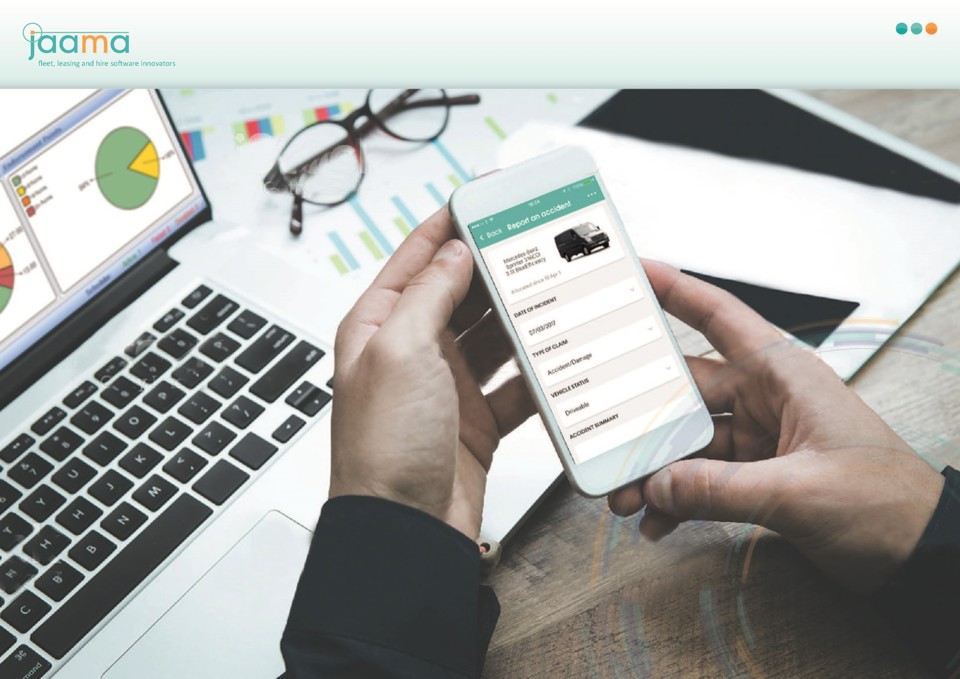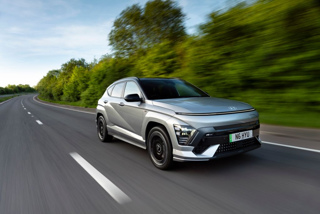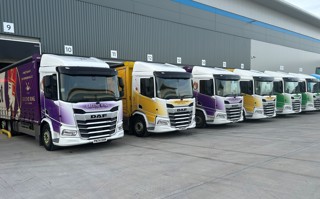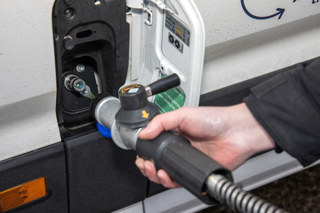Fleet decision-makers have never been more awash with data. As the sector becomes increasingly digitised, with connected vehicles and online services, the amount of information available is growing exponentially.
Covering many aspects of driver, vehicle and compliance issues, this data helps fleets to identify efficiencies and savings as well as staying safe and legal.
However, if not properly handled, companies risk drowning in a tsunami of information. This is where fleet software comes in: it can pull together data from myriad sources and present it to the fleet decision-maker in an easy-to-use dashboard, highlighting areas of concern, and enabling them to produce board-level reports.
“Companies want to use software to centralise fragmented data, where they have a lot of information in disparate areas of the company documented on multiple spreadsheets,” says Peter Golding, founder of FleetCheck.
“Electronic access gives that in a robust format that is easy to call up and understand.”
Paper files and documents that are stored locally on a device have been the traditional way organisations kept fleet information. This is still relatively commonplace, particularly among small-to-medium enterprises (SMEs) operating just a handful of vehicles which do not view investment in fleet management software as worthwhile.
However, there are signs this is changing as the volume of data rises, aligned to the need to be compliant and reduce administration time.
Analysis by FleetCheck of the reasons mentioned by companies who had contacted it in the past 12 months with a view to buying fleet management software found removing a reliance on spreadsheets was the second biggest reason (digitalising walkaround checks and defect reporting was number one).
Fleet software can have a huge positive impact on the time spent on administration: Samsara gives the example of its US customer American Cementing, which ditched 13,000 pieces of paper and saved more than 1,600 hours per year in administrative time when its 400-strong fleet became paperless.
The convenience and confidence that comes with centralisation is also notable.
It means fleet managers can log on to one platform every day to see telematics data, fuel card transactions, maintenance history and reminders in one place and in a standardised format. This also gives it context.
Instant access
Measurable efficiencies are created by being able to organise digitised data according to location, driver, vehicle and more. Plus information on fuel costs, maintenance and safety, for example, can be brought together and analysed to highlight efficiencies – or lack of – in vehicles, routes or drivers. It can also be shared easily.
Consolidating data gives excellent management information (MI), which not only allows fleet managers to see where they can make savings but also facilitates compliance management so they can ensure drivers are operating in a safe and lawful manner, enabling them to take quick action where they are not.
This applies to areas of risk that range from legal tyre tread depth to driver health, where someone might have a condition that should be reported to an organisation’s insurance company.
“The system can hold a lot of information that is easy to find in a presentable form or you can get it into Excel,” says managing director of Jaama Martin Evans. “It is automated, so it can be sent out to managers, and it is easy to manipulate or configure. And users can quickly marry up details with both vehicle and driver.”
Fleet management software is either web- or cloud-based. Web-based applications need a browser to run on, so they need an internet connection – for example, online banking; cloud-based ones run on a local computer or workstation and an internet connection is required mainly for downloading or uploading – for example, Microsoft Office 365.
Without the need for an internet connection, information is available anytime, anywhere. Using the cloud also gives integration opportunities.
“Fleetio has an extensive app directory that allows us to pull in data such as odometers, fuel transactions, faults, and more from third party solutions,” says Brianna Perry, its product marketing coordinator.
For cloud-based systems, companies can choose whether to host the software themselves or access it on the supplier’s servers (software as a service). If buyers host it, they must ensure it meets data security standard ISO 20001.
Digital dashboards
All this information is of little use if fleet decision-makers are unable to access the important data when they need it.
Fleet management software displays this information in customisable dashboards, with the data sorted, for example, by category, driver, vehicle and more.
This can be displayed in tiles, graphs or charts, with critical data highlighted – often using a traffic light system - to ensure it is prioritised by the fleet decision-maker.
Someone managing inventory could see stock value and usage, plus open work orders while a fleet manager could look at vehicle assignments, inspection submissions and total costs.
Samsara’s real-time tracking updates fleet managers about arrival or delivery times, vehicle telematics, gives maintenance alerts, idling ratios, live charging status for electric vehicles (EVs), return on investment (ROI) data and more.
As FleetCheck’s Golding puts it: “A dashboard gives a useful overview, but it allows fleet managers to drill down and go deeper into the database.” Forensic analysis at your fingertips.
Exception notifications can be built in, removing the need for calendar or paper reminders and bringing greater clarity and efficiency.
For example, they can be set up to indicate when a programme is breached; if a fleet’s mileage policy is to replace vehicles every three years or 60,000 miles, but a rogue vehicle is heading for twice that mileage in three years, the fleet manager will receive an alert when it reaches the threshold.
Alerts can be set either by the fleet or by regulation, for example licence inspection, road tax. But if a fleet wants a to be reminded one month before an MOT due date, for example, a notification is predicated on that.
“We configure exception reports with customers; if company policy is daily tyre assessments and no one has done checks on a particular vehicle, that will be reported,” says Jaama’s Evans.
This has legal ramifications: if a driver is unable to stop in an emergency because of defective tyres, the company will be held responsible.
App-osite efficiency
Fleet management software providers have apps that make daily tasks easily manageable, often through shortcuts to important actions such as starting a vehicle examination.
Drivers access the app via a password, which ensures fleet managers know who is doing what and when. This enables them to audit vehicle checks because anything logged by a driver automatically appears on the central system, becoming instantly available to the fleet manager.
These sit alongside other reports such as preventive maintenance schedules, logs and vehicle status, so mechanics can prioritise the most urgent items and sign off the inspection to meet regulatory standards.
Now that improved technology means cars are generally serviced only every two years, it is essential to make sure tyres are safe, lights are working and so on.
So, if an individual thinks they can ‘get away’ with doing a vehicle check from the driver’s seat, their log in and log off times will add up to an unfeasibly short examination and the fleet manager can follow this up. It’s similar if details are submitted from outside a pre-defined geographical area.
The popularity of smartphones – increasingly provided by companies for job-need drivers – means staff can now access information and also carry out remote vehicle inspections. The app can be customised to their vehicle with the information relayed to the fleet or transport manager, highlighting any defects or compliance issues. The fleet manager can then take the decision whether to remove the vehicle from the road for repair.
“If company policy states, ‘do a daily inspection’ and an unchecked vehicle moves, data from telematics will ensure the manager is notified of the problem,” adds Golding.
A further advantage of app-based software is that they are ever-evolving as suppliers regularly add new functionality.
Uploading photos
Photographs can also be loaded into apps, providing vital evidence in the event of an accident. Apps guide drivers through the necessary protocols/form filling to ensure all corners are covered from photographic record to witness details, all of which is then instantly relayed to the fleet manager, who can give the insurance company prompt first notification of loss (FNOL).
The same is true of video footage from dashcams, whose live feeds are sent automatically to the fleet management system for instant viewing, obviating the need for managers to retrieve the camera so they can download the recording.
In addition, “any information derived from an accident or incident can be analysed and used for future driving coaching as part of an ongoing safety programme”, says Max Eversfield, Samsara enterprise field solution consultant.
Pool car management – like grey fleet – used to resemble herding cats not least because it was difficult to pin down who was driving which pool car at a specific moment.
However, apps can help here, too; unique personal log-ins will identify the driver and the vehicle, giving valuable detail.
And “rolling out the app to grey fleet drivers lets them update their car status without any paperwork headaches”, says Evans.
Accurate mileage tracking will lead to worthwhile savings by showing the fuel economy of similar vehicles, highlighting either more efficient vehicles or how the car is being driven. Tracking alerts can also draw attention to trends in vehicle or driver performance, something that might otherwise go unnoticed.
In addition, apps facilitate communication and cooperation.
“Technicians can add photos and documents to work orders, leave comments and tag other technicians for handoff, and fleet managers can follow the entire process without having to track anyone down,” says Perry.




















Login to comment
Comments
No comments have been made yet.